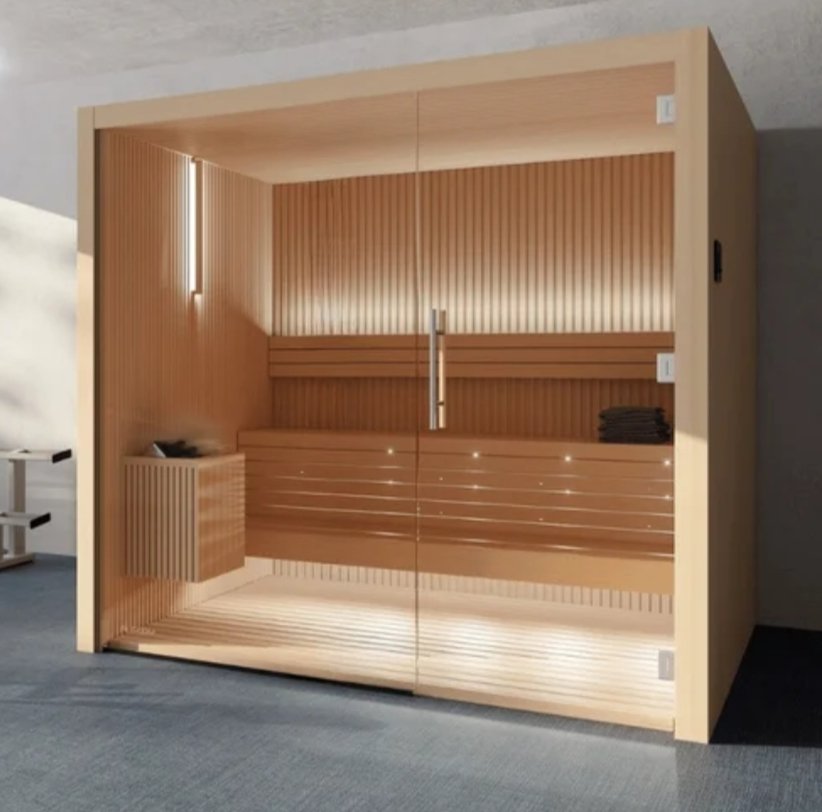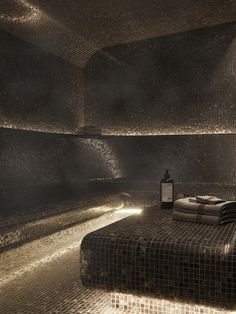The Benefits of Installing a Sauna Room at Home
Adding a sauna room to your home not only enhances the overall value of your property but also provides numerous health benefits and a personal retreat for relaxation. Saunas are known for their therapeutic properties, predominantly improving circulation. Regular use facilitates better blood flow, which can aid in muscle recovery and alleviate pain from conditions such as arthritis.
Another significant health advantage of sauna use is detoxification. The high temperature induces sweating, which is a natural process that helps rid the body of toxins. This promotes clearer skin and can assist in weight loss through increased metabolic rate. Moreover, the heat from the sauna supports cardiovascular health by elevating the heart rate, similar to moderate exercise, subsequently reducing the risk of cardiovascular diseases.
Stress relief is yet another vital benefit. Spending time in a sauna helps lower cortisol levels, the body’s primary stress hormone. The tranquil environment coupled with the soothing warmth provides a refuge from daily stressors, contributing to improved mental health and overall well-being.
Beyond these personal gains, a home sauna can significantly boost property value. Potential buyers may view saunas as a luxury feature, making your home more appealing in the real estate market. This investment can moderate the return on substantial expenditures by elevating your home’s marketability.
When considering a sauna room installation, it’s essential to be informed about the different types of saunas available. Traditional Finnish saunas use dry heat and stones, whereas infrared saunas employ infrared light to generate heat. Each type offers unique benefits and should be chosen based on individual preferences and health needs.
Ultimately, installing a sauna room is an investment in both your health and home, offering a private sanctuary to unwind and rejuvenate, while simultaneously enhancing your property’s worth.

Creating a Steam Room: Key Considerations and Benefits
Planning to transform a part of your home into a tranquil steam room involves several key considerations to ensure an optimal installation. First, the chosen space needs to be adequately sized. Steam rooms typically require a minimum of 4×4 feet, accommodating multiple users comfortably. Additionally, the room should have proper sealing to prevent steam from escaping, thereby maintaining the desired humid environment.
Material selection is another crucial factor. Steam rooms benefit most from non-porous materials such as ceramic tiles, glass, or acrylics, which effectively withstand the humid environment and are easy to clean. Differentiating between a steam room and a sauna can aid in decision-making: while steam rooms generate moist heat (50 – 120°F) with nearly 100% humidity, saunas use dry heat (150°F – 195°F). Choosing between these options depends on personal preferences and specific health requirements.
Delving into health benefits, steam rooms are renowned for supporting respiratory health. Steam inhalation can ease congestion and bronchitis symptoms, making it a favored choice for individuals with respiratory conditions. Additionally, the humid environment enhances skin health by opening pores and removing impurities, leaving the skin refreshed and revitalized. Muscle relaxation is another advantage, offering relief from tension and soreness, making steam rooms immensely popular among athletes and fitness enthusiasts.
The installation process of a steam room involves technical steps that must be meticulously followed. This includes the installation of a steam generator, typically located outside the room, connected to a control panel. Ensuring the room is watertight and insulating the walls and ceiling to retain heat is also paramount. Following installation, routine maintenance is essential to prolong the lifespan and efficiency of the steam room. Regularly cleaning the surfaces, checking the steam generator for any issues, and ensuring the seals remain intact are vital maintenance actions.
Incorporating these considerations and understanding the benefits can help homeowners make informed decisions, resulting in a well-equipped steam room that caters to health benefits and personal relaxation preferences.

The Luxury and Therapeutic Benefits of Whirlpool Hot Tubs
Investing in a whirlpool hot tub can transform any home into a private oasis of luxury and relaxation. These modern marvels are equipped with advanced features that enhance their therapeutic benefits. Sophisticated jet systems are a hallmark of whirlpool hot tubs, allowing users to target specific muscle groups for pain relief and improved circulation. Adjustable temperature controls provide the ability to customize the water’s warmth, making it ideal for soothing sore muscles and alleviating joint pain. The variety of seating configurations ensures comfort and supports proper posture during use.
One of the most compelling advantages of owning a whirlpool hot tub is the comprehensive health benefits it offers. Hydrotherapy, widely recognized in medical circles, excels in improving circulation, which can lead to enhanced immune system function and quicker muscle recovery. The buoyant environment reduces the strain on joints, providing significant relief for those suffering from arthritis or similar conditions. Moreover, the soothing environment fosters significant stress reduction, which is crucial for overall mental health and well-being.
There are numerous whirlpool hot tub models available on the market, each catering to different preferences and requirements. Some units are designed for more intimate setups, suited for smaller spaces or personal use, while others can accommodate larger groups, making them perfect for social gatherings. When choosing a whirlpool hot tub, several factors should be considered to ensure it aligns with your lifestyle and needs. Size is paramount, as it must fit the designated space without compromising accessibility. Installation requirements are also critical; some models may necessitate electrical or plumbing modifications. Budget constraints can influence your choice as well, with options ranging from high-end, feature-rich models to more affordable, basic versions that still offer essential benefits.
Ultimately, the decision to install a whirlpool hot tub hinges on balancing luxury with necessity, ensuring that it not only enhances the aesthetic value of your home but serves as an invaluable tool for your health and wellness.

Cold Plunge Pools: Revitalize Your Body and Mind
Cold plunge pools, long revered in various cultures for their therapeutic properties, are increasingly becoming a popular feature in modern home wellness spaces. These pools involve immersing the body in cold water, typically maintained at temperatures ranging from 50 to 60 degrees Fahrenheit. The cold immersion can offer a multitude of physiological benefits that contribute to overall well-being.
One of the primary advantages of cold plunge pools is the reduction of muscle inflammation. Athletes and fitness enthusiasts often turn to cold plunges to alleviate soreness and expedite recovery post-workout. The cold water causes vasoconstriction, which reduces blood flow to inflamed tissues, thereby decreasing swelling and pain. Additionally, cold water immersion promotes faster recovery by minimizing muscle damage and fatigue.
Beyond the physical benefits, cold plunge pools can also have a profound impact on mental health. The sudden shock of cold water stimulates the release of endorphins, often referred to as the body’s natural mood elevators. This can lead to an improved mood, reduced anxiety, and an overall sense of rejuvenation. Regular use of cold plunge pools is linked to enhanced mental clarity and increased resilience to stress.
Installing a cold plunge pool requires careful planning and consideration. Firstly, you need to identify an appropriate space that accommodates the pool dimensions and allows for easy access. Design options vary, ranging from traditional wooden tubs to more contemporary fiberglass models. Each design type offers its own aesthetic and functional benefits, contributing to your home’s overall ambiance.
Maintenance is another crucial aspect to consider. Cold plunge pools need to be kept clean and the water temperature should be regularly monitored and maintained. Investing in good filtration systems and appropriate sanitation measures will ensure the longevity and cleanliness of the pool.
Integrating a cold plunge pool into a wellness routine can significantly enhance the benefits of other therapeutic practices. Alternating between hot and cold therapies, such as combining sauna or steam room sessions with cold plunges, can magnify the effects on both physical recovery and mental tranquility. This practice of contrast hydrotherapy revitalizes the body and mind, providing a comprehensive wellness experience that invigorates the senses and boosts overall health.

